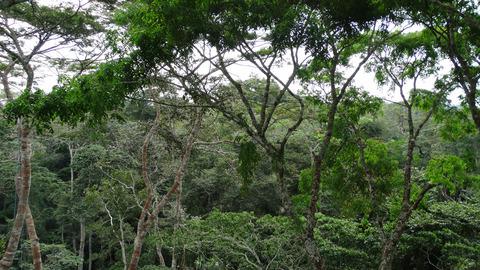当前位置:
X-MOL 学术
›
Funct. Ecol.
›
论文详情
Our official English website, www.x-mol.net, welcomes your
feedback! (Note: you will need to create a separate account there.)
Terrestrial laser scanning reveals convergence of tree architecture with increasingly dominant crown canopy position
Functional Ecology ( IF 4.6 ) Pub Date : 2020-09-12 , DOI: 10.1111/1365-2435.13678 Olivier Martin‐Ducup 1 , Pierre Ploton 1 , Nicolas Barbier 1 , Stéphane Momo Takoudjou 2 , Gislain Mofack 2 , Narcisse Guy Kamdem 2 , Thierry Fourcaud 1 , Bonaventure Sonké 2 , Pierre Couteron 1 , Raphaël Pélissier 1
中文翻译:

陆地激光扫描揭示了树冠越来越集中的树木结构的融合
更新日期:2020-09-12
Functional Ecology ( IF 4.6 ) Pub Date : 2020-09-12 , DOI: 10.1111/1365-2435.13678 Olivier Martin‐Ducup 1 , Pierre Ploton 1 , Nicolas Barbier 1 , Stéphane Momo Takoudjou 2 , Gislain Mofack 2 , Narcisse Guy Kamdem 2 , Thierry Fourcaud 1 , Bonaventure Sonké 2 , Pierre Couteron 1 , Raphaël Pélissier 1
Affiliation

|
- To fulfil their growth and reproductive functions, trees develop a three‐dimensional structure that is subject to both internal and external constraints. This is reflected by the unique architecture of each individual at a given time. Addressing the crown dimensions and topological structure of large tropical trees is challenging considering their complexity, size and longevity. Terrestrial laser scanning (TLS) technology offers a new opportunity for characterising and comparing these properties across a large number of individuals and species.
- In the present study, we specifically developed topology and geometry metrics of crown architecture from TLS data and investigated how they correlated with metrics of tree and crown form, crown position and shade tolerance.
- Fifty‐nine trees belonging to 14 coexisting canopy species in semideciduous forests of Cameroon were scanned with TLS and reconstructed using quantitative structural models (QSMs). The species belonged to different shade‐tolerance groups and were sampled in different crown positions. Crown‐form metrics and branch topology metrics were quantified from the TLS data, and principal component analysis (PCA) was used to study how the 59 sampled trees were distributed along axes of architectural diversity. Allometric scaling parameters derived from West Brown and Enquist (WBE) metabolic theory were also quantified from the QSMs, and their correlations with the PCA axes were evaluated.
- The results revealed that the branch topology and crown‐form metrics were not correlated since similar topologies could lead to contrasting crown forms. Crown form, but not branch topology, changed with tree shade tolerance, while convergence in tree topology and towards expected WBE parameters was observed for all trees reaching dominant crown positions independent of species shade tolerance.
- This convergence is interpreted as resulting from a liberation effect of canopy trees from side‐shading constraints, leading to crown development processes through sequential reiteration.
中文翻译:

陆地激光扫描揭示了树冠越来越集中的树木结构的融合
- 为了实现其生长和生殖功能,树木形成了受内部和外部约束的三维结构。这由给定时间每个人的独特体系结构反映出来。考虑到大型热带树木的复杂性,大小和寿命,解决其树冠尺寸和拓扑结构具有挑战性。陆地激光扫描(TLS)技术为表征和比较大量个体和物种的这些特性提供了新的机会。
- 在本研究中,我们根据TLS数据专门开发了树冠结构的拓扑和几何度量,并研究了它们与树冠形状,树冠位置和阴影容忍度的度量之间的关系。
- 喀麦隆半落叶林中属于14种共存冠层树种的59棵树用TLS扫描并使用定量结构模型(QSM)重建。该物种属于不同的耐荫性组,并在不同的树冠位置进行了采样。从TLS数据中量化了冠状度量和分支拓扑度量,并使用主成分分析(PCA)研究了59个采样树如何沿建筑多样性轴分布。还从QSM中量化了源自West Brown和Enquist(WBE)代谢理论的异速生长比例参数,并评估了它们与PCA轴的相关性。
- 结果表明,分支拓扑与冠状度量不相关,因为相似的拓扑可能会导致冠状的对比。树冠形态随树荫容差而改变,但分支拓扑不改变,而对于所有达到优势树冠位置而与树荫容忍度无关的树木,观察到树状拓扑趋于收敛并达到预期的WBE参数。
- 这种趋同被解释为冠层树由于侧影约束而产生的解放效果,从而导致冠层发育过程通过顺序重复进行。











































 京公网安备 11010802027423号
京公网安备 11010802027423号